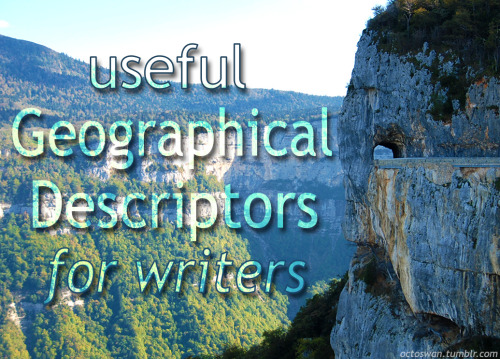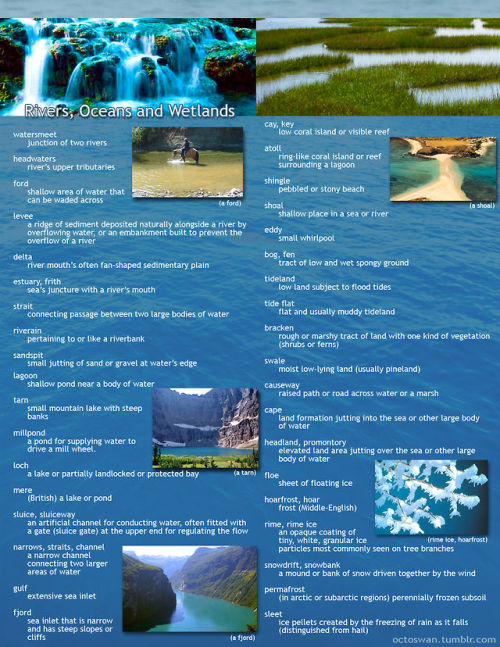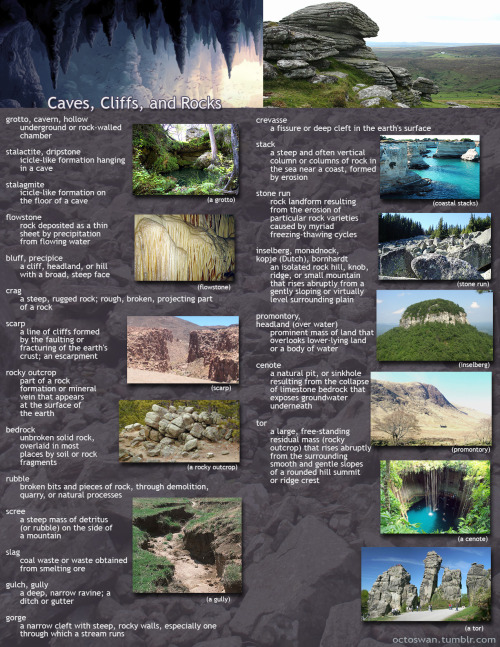Your personal Tumblr library awaits
Writing Reference - Blog Posts
a list of 100+ buildings to put in your fantasy town
academy
adventurer's guild
alchemist
apiary
apothecary
aquarium
armory
art gallery
bakery
bank
barber
barracks
bathhouse
blacksmith
boathouse
book store
bookbinder
botanical garden
brothel
butcher
carpenter
cartographer
casino
castle
cobbler
coffee shop
council chamber
court house
crypt for the noble family
dentist
distillery
docks
dovecot
dyer
embassy
farmer's market
fighting pit
fishmonger
fortune teller
gallows
gatehouse
general store
graveyard
greenhouses
guard post
guildhall
gymnasium
haberdashery
haunted house
hedge maze
herbalist
hospice
hospital
house for sale
inn
jail
jeweller
kindergarten
leatherworker
library
locksmith
mail courier
manor house
market
mayor's house
monastery
morgue
museum
music shop
observatory
orchard
orphanage
outhouse
paper maker
pawnshop
pet shop
potion shop
potter
printmaker
quest board
residence
restricted zone
sawmill
school
scribe
sewer entrance
sheriff's office
shrine
silversmith
spa
speakeasy
spice merchant
sports stadium
stables
street market
tailor
tannery
tavern
tax collector
tea house
temple
textile shop
theatre
thieves guild
thrift store
tinker's workshop
town crier post
town square
townhall
toy store
trinket shop
warehouse
watchtower
water mill
weaver
well
windmill
wishing well
wizard tower
World Building
Sometimes, writers find it necessary to add more depth to the world surrounding their characters. I’ve collected a few links that should be helpful in this process. Some of these are better for a fantasy stories, but have ideas that could prove useful for writers of all genres, in one way or another.
MAP GENERATION If you have decided to create your own land mass for the sake of your story, you may be grateful to have this link. Users should read the description below before using, but it is easy to use and helpful for anyone wanting to create a new island or continent. I prefer using this tool over any others I’ve seen online. This website only contains the demo. The full version has more ways to edit the map, but getting the full version requires downloading and having proper software. I’ve found that the demo, on its own, should be enough for anyone who can’t get the full version for one reason or another. However, the link for full version is also on the page, should you want it.
WEATHER AROUND THE WORLD Knowing weather details of areas can be helpful when writing about an area, especially if it’s one you’re not familiar with. This website has the recorded weather of pretty much everywhere on Earth, and even provides averages for the past year in specific areas. It’s great for writers who want an understanding of how the weather in their story might affect the characters. For instance: if the summer heat in an area is consistently over 100 degrees, the characters might be less willing to go outside, and be in need of constant hydration.
FANTASY JOBS THAT AREN’T KNIGHT OR PEASANT Anyone who is writing a story that takes place in a less developed civilization, be it medieval times, or a fantasy world that hasn’t quite hit its industrial revolution, should probably have this list. It’s a simple list of a 100 jobs that you might consider giving to the characters in your story to make them seem like real people. The creator of the list even adds a few at the end for younger characters. Choosing any of them for your story may take some added research, but will be worth the depth added to your story.
FAMILY TREE TOOL If you’ve ever read the series “Lord of the Rings”, you may know that pretty much everyone in the books has a long list of ancestors. While I would never endure such an endeavor, if you feel so inclined to come up with a lineage for your character, this is a tool you can use. It’s easy to use, and allows for adding information beyond name and year of birth/death. You’re able to change what information shows up on the table, and when finished you can even print it out.
HOME DESIGNER So this is good if you have time to kill and really want to do some in-depth building. This tool will let you be the designer of the home of your characters. You’ll get out what you put into it, so if your character lives in a three story, 10 bedroom home, you may have to put in a bit more effort to use this tool effectively. You can also simply create individual rooms, if that’s more along the lines of what you want. Over all, while this tool may take a bit of time to learn, it isn’t very complicated. I suggest it to everyone who wants to explore how the home of their characters looks.
LANGUAGE CREATION If you were thinking about writing your own language, this link will make you decide whether you really want to create your own language, or if you want to give up on the idea entirely. It’s a long process, but is completely spelled out in this link, and the additional pages that the website provides links to. You can also buy the book by the same author for $0.99; but all the information is available for free. Either way, it should be an easy choice to make after reading through what the website has to offer. I think creating a language is for people with more time, patience, and understanding of their own language than I have, but it is certainly fun to think about. The author also discusses different methods people use to create languages, and what is wrong with those methods. I believe this is, by far, the best resource for creating a language.
For more information on my blog please visit my ABOUT PAGE







american horror story: the seven wonders
Diamonds
My emotions in a gutter.
Struggling to recover but I smile, it stop all the questions.
They can’t relate to the hurting of my essence.
Miss using my presence.
Saying I’m precious but only when I have blessings.
Never when I’m looking for guidance.
I’m sinking under the weight of the world.
All this pressure but can’t make diamonds.
Missing Spots
I can’t get it off my mind.
It been going on for years.
Losing who we care.
People saying they’re there but who really cares?
It’s two different things.
Tired of hearing same things.
Sorry for your lost.
They’re always in your heart like my heart didn’t stop.
Like it’s not missing spots.
How to Make Your Characters Almost Cry
Tears are powerful, but do you know what's more impactful? The struggle to hold them back. This post is for all your hard-hearted stoic characters who'd never shed a tear before another, and aims to help you make them breakdown realistically.
The Physical Signs of Holding Back Tears
Heavy Eyelids, Heavy Heart Your character's eyelids feel weighted, as if the tears themselves are dragging them down. Their vision blurs—not quite enough to spill over, but enough to remind them of the dam threatening to break.
The Involuntary Sniffle They sniffle, not because their nose is running, but because their body is desperately trying to regulate itself, to suppress the wave of emotion threatening to take over.
Burning Eyes Their eyes sting from the effort of restraint, from the battle between pride and vulnerability. If they try too hard to hold back, the whites of their eyes start turning red, a telltale sign of the tears they've refused to let go.
The Trembling Lips Like a child struggling not to cry, their lips quiver. The shame of it fuels their determination to stay composed, leading them to clench their fists, grip their sleeves, or dig their nails into the nearest surface—anything to regain control.
The Fear of Blinking Closing their eyes means surrender. The second their lashes meet, the memories, the pain, the heartbreak will surge forward, and the tears will follow. So they force themselves to keep staring—at the floor, at a blank wall, at anything that won’t remind them of why they’re breaking.
The Coping Mechanisms: Pretending It’s Fine
A Steady Gaze & A Deep Breath To mask the turmoil, they focus on a neutral object, inhale slowly, and steel themselves. If they can get through this one breath, they can get through the next.
Turning Away to Swipe at Their Eyes When they do need to wipe their eyes, they do it quickly, casually, as if brushing off a speck of dust rather than wiping away the proof of their emotions.
Masking the Pain with a Different Emotion Anger, sarcasm, even laughter—any strong emotion can serve as a shield. A snappy response, a bitter chuckle, a sharp inhale—each is a carefully chosen defence against vulnerability.
Why This Matters
Letting your character fight their tears instead of immediately breaking down makes the scene hit harder. It shows their internal struggle, their resistance, and their need to stay composed even when they’re crumbling.
This is written based off of personal experience as someone who goes through this cycle a lot (emotional vulnerability who?) and some inspo from other books/articles
how to write creepy stories
over describe things
under describe things
short sentences in rapid succession build tension
single sentence paragraphs build dread
uncanny valley = things that aren't normal almost getting it right
third person limited view
limited expressions
rot, mold, damage, age, static, flickering, espsecially in places it shouldn't be
limited sights for your mc - blindness, darkness, fog
being alone - the more people there are, the less scary it is
intimate knowledge, but only on one side
your reader's imagination will scare them more than anything you could ever write. you don't have to offer a perfectly concrete explanation for everything at the end. in fact, doing so may detract from your story.
I’ve seen your kiss scene and fight scene vocab posts and was wondering if you could do one about some things characters may do when they are nervous, or there is awkward tension — not necessarily romantic but just awkward.
Nervous Tension Vocab
Physical Reactions
have sweat beading/breaking out on one's forehead
have one's heart in one's mouth (or throat)
have one's heart pounding (or pulse racing)
butterflies in one's stomach
hand feeling clammy
knees bouncing
pacing back and forth
tearing up due to embarassment (wanting to cry)
Shift their weight from one foot to the other
Sway slightly where they are standing
Fidget with their hair, clothes, nails, or something they’re holding
Glance around the room or refuse to make eye contact with someone
Chew on their lips or nails
Hum quietly to themself
Tap their fingers on their arm, the wall, or a table
Wrap their arms around themself
Cross their arms or legs while seated
Pick at their lips or cover their mouth
Rub their own neck or shoulder
Sigh often
Sit with their knees up near their chest, or lay in the fetal position
Look stiff and uncomfortable
Check over their shoulder often, or glance around the room
Cough or clear their throat often
A pounding heartbeat, or the feeling that their heartbeat is in their head
Accelerated or heavy breathing
A tingling sensation in their fingers, hands, or legs
A rush of energy (which would suddenly leave them afterward, making them even more tired than usual)
Dizziness
Tightened muscles
Descriptors
fumbled
blushed
winced
fidgeted
cringed
stuttered
giggled
afluttered
agitated
robotic
hesitant
bothered
distracted
edgy
clumsily
awkwardly
distractedly
flustered
frantically
frayed
hypertense
nervy
jittery
jumpy
intimidated
paranoid
perturbed
rattled
queasiness
restive
restless
skittery
shudder
skittish
strung up
tenterhooks
tight
stressy
uneasy
unquiet
twitchy
unsettled
uptight
unrelaxed
Idioms
be at your wit's ends
be bricking it
be ill at ease
be on pins and needles
be under the gun
get in a sweat
have all the cares of the world on your shoulders
have kittens
like a cat on a hot tin roof
sweat bullets
If you like my blog, buy me a coffee☕ and find me on instagram! 📸
More favourite numerical memes:
Implicit or implicit enumeration of uncountable things (example: taking inventory of the fucks which one gives)
Suggesting the divisibility of things which are not customarily thought of as able to be subdivided (example: "six whole people")
Using words that aren't numbers as numbers (example: "one William dollars")
Technically correct but contextually misleading estimates (example: looking at a group of several thousand things and observing that there are "at least three")
Incongruous qualifiers for apparently simple sums or tallies (example: she was twenty-seven years old, not counting 2014)
hey boy don't kill yourself. green's dictionary of slang is available online and allows you to explore 500 years of english vulgarity. you can search by part of speech, source, time period, etymology, and usage. there's a whole category for gay slang. they even have specific citations listed so you can see the exact context for yourself. boy did you know that in 1927 "to kneel at the altar" was slang for "to sodomize"
How to show emotions
Part V
How to show grief
a vacant look
slack facial expressions
shaky hands
trembling lips
swallowing
struggling to breathe
tears rolling down their cheeks
How to show fondness
smiling with their mouth and their eyes
softening their features
cannot keep their eyes off of the object of their fondness
sometimes pouting the lips a bit
reaching out, wanting to touch them
How to show envy
narrowing their eyes
rolling their eyes
raising their eyebrows
grinding their teeth
tightening jaw
chin poking out
pouting their lips
forced smiling
crossing arms
shifting their gaze
clenching their fists
tensing their muscles
then becoming restless/fidgeting
swallowing hard
stiffening
holding their breath
blinking rapidly
exhaling sharply
How to show regret
scrubbing a hand over the face
sighing heavily
downturned mouth
slightly bending over
shoulders hanging low
hands falling to the sides
a pained expression
heavy eyes
staring down at their feet
More: How to write emotions Masterpost
If you like my blog and want to support me, you can buy me a coffee or become a member! And check out my Instagram! 🥰
some fucking resources for all ur writing fuckin needs
* body language masterlist
* a translator that doesn’t eat ass like google translate does
* a reverse dictionary for when ur brain freezes
* 550 words to say instead of fuckin said
* 638 character traits for when ur brain freezes again
* some more body language help
(hope this helps some ppl)
sometimes you need dialogue tags and don't want to use the same four


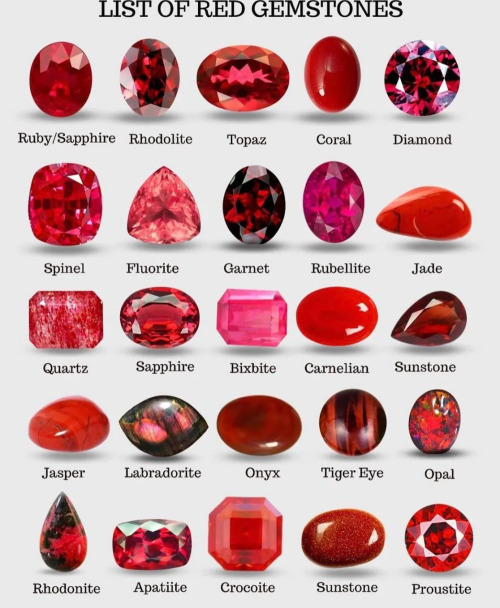

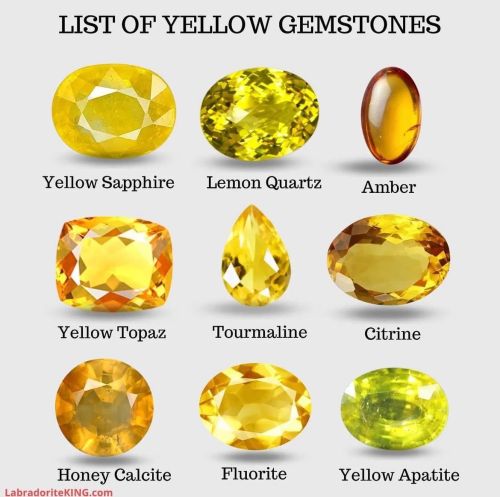
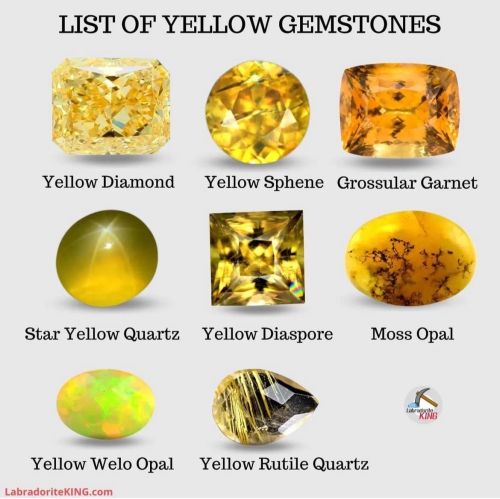
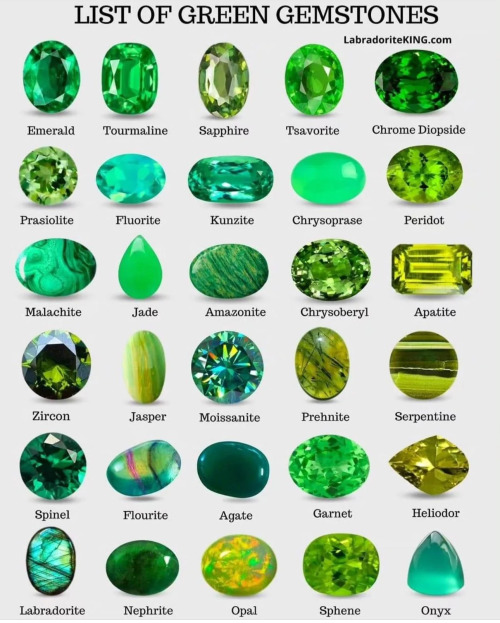
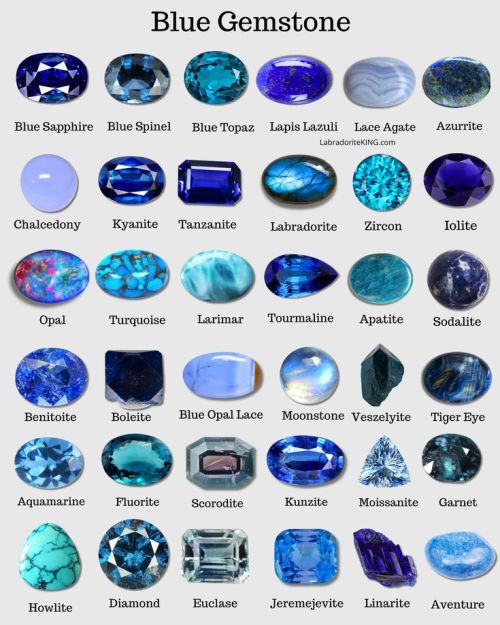
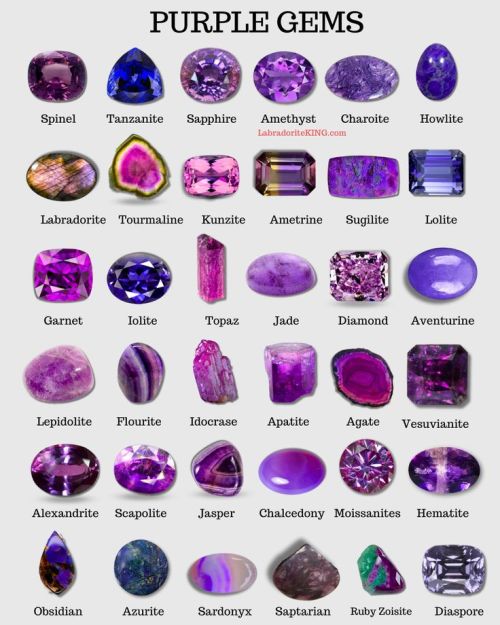

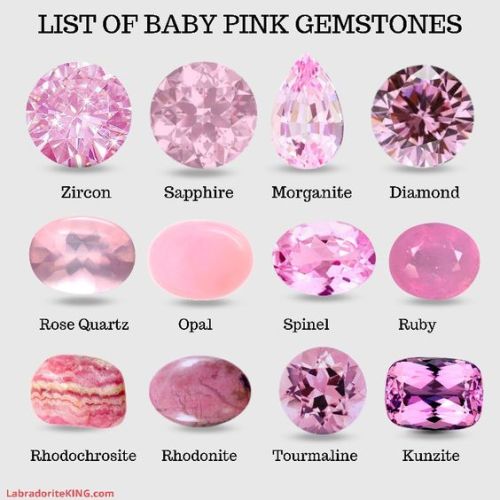
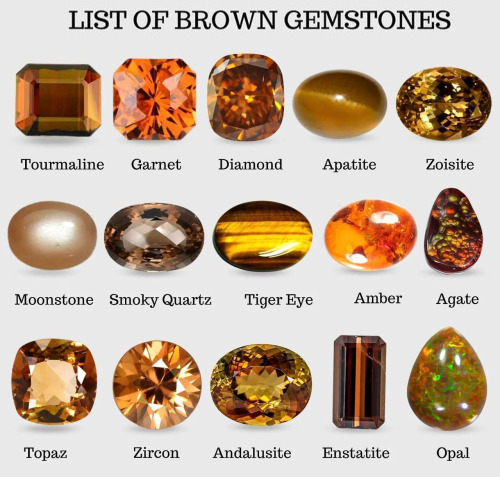
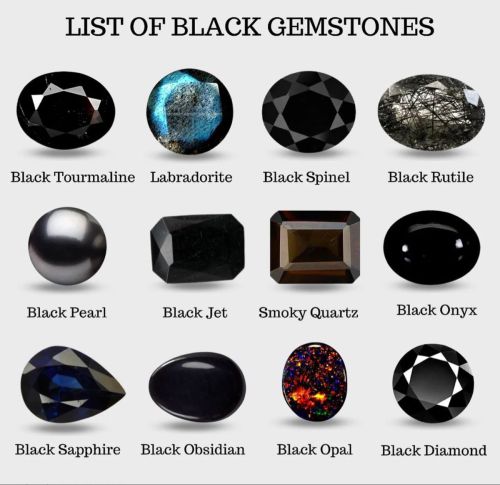
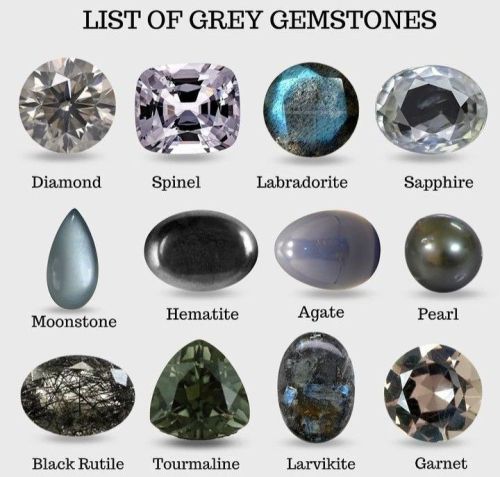
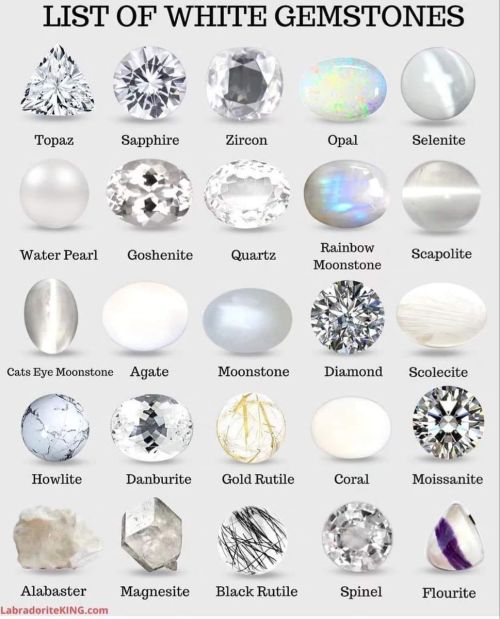
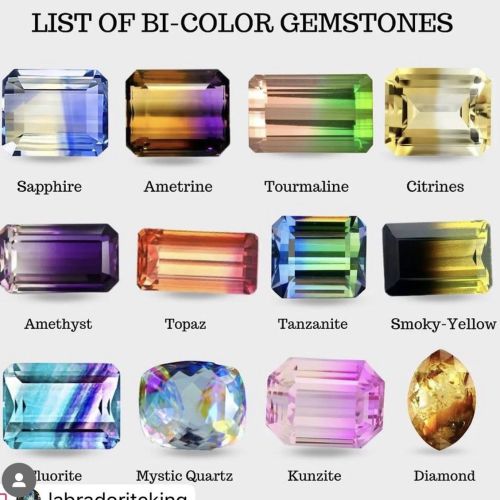
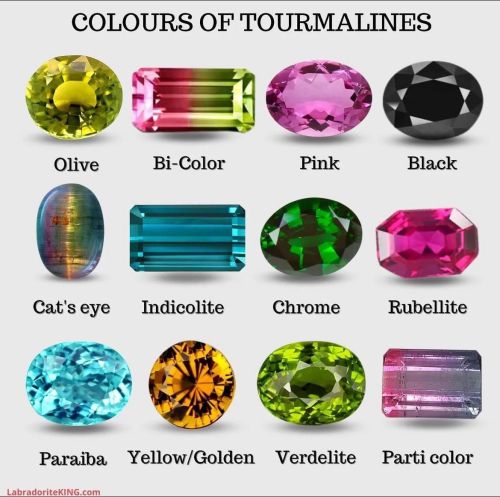
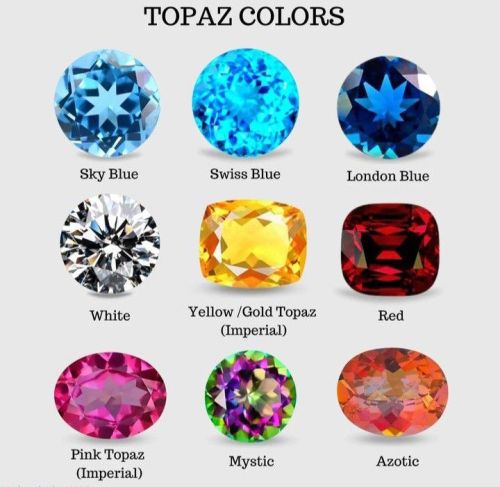
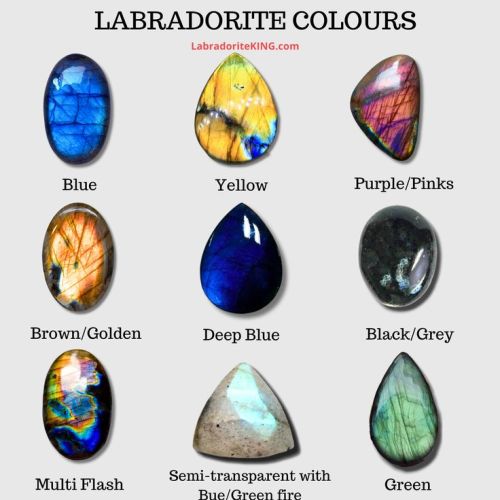
By LabradoriteKing on Pinterest
How to create an atmosphere: Supermarket
Sight
advertisements for products
big signs showing discounts
aisles full of colorful products
fresh produce
employees in matching uniforms
all different kinds of costumers
with shopping carts
with children running around
with a stroller or toddlers sitting in the shopping cart
with a service dog by their side
Hearing
the sound of shopping carts being pushed and bumping into shelves
parents calling for their children
people talking on the phone
a man asking his wife if they still have enough toilet paper at home
someone asking the employee where they can find something
music interrupted by announcements about promotions the store is doing
the surring and beeping sound of the cash register belt
the sound of the electronic doors opening and shutting again
Touch
the stickiness of the floors
the differents textures of each item they think about buying
the coldness and often stickiness of the handle of the shopping cart
the sudden wetness from some products that are either fresh produce or where the package is leaking
Smell
the smell of spilled drinks that someone dropped and left for the employees to clean up
the smell of cleaning products from them having to sweep it up
the smell of hand sanitizer
the smell of different products the costumer holds up to their face and smells to decide if they like it
the horrendous smell of deposit machines where you return your not quite empty beer bottles to and the leftover liquid spills everywhere
Taste
different samples offered at the supermarket
If you like my blog and want to support me, you can buy me a coffee or become a member! And check out my Instagram! 🥰
Circling vs. Zigzagging Conflicts

Nearly every writer understands that a story needs conflict. The protagonist sets off to fulfill a goal, runs into an antagonistic force, and their struggle creates conflict. This should happen in the story as a whole, this should happen in acts, and it should happen in almost every scene--the difference is that the smaller the structural unit, the smaller the antagonist and conflict (simplistically speaking).
Today I want to talk about a sneaky problem I sometimes see when editing manuscripts, one that relates to conflicts.
Sometimes the writer simply “circles” the conflict.
What I mean is that after a given conflict, nothing has actually changed in the story. We just completed a “circle.”
For example, say the protagonist is a favorite target of the schoolyard bully. They get into a verbal fight, but when it's over, nothing's different. The conflict didn't have any consequences.
It may not sound that bad.
And if it only happens once in a while, and there are enough other conflicts going on, it may not be.
But if this happens repeatedly or this is the main conflict, the plot isn't progressing. It just did a circle and the characters ended up in the same situation they were before the encounter. Essentially, no matter how exciting the scene may seem to be, you could still cut it and the story would be the same.
Let's look at an even less obvious example.
The protagonist needs to get Object X from Character B.
The protagonist finds a way to successfully steal it.
But then immediately afterward, Character B steals it back.
The scene ends, and the protagonist is back at square one.
It doesn't sound that bad, does it?
And if it only happens once in a while, and there are enough other conflicts going on, it may not be.
But if this sort of thing happens repeatedly--over and over and over--the plot isn't progressing. You're just going back and forth and back and forth and back and forth. And if we just arc that path a bit, guess what? It creates a circle.

Another example:
The protagonist has a problem.
But she's not taking action to solve the problem.
Yes, she reacts emotionally to the problem.
She may even sometimes come up with a plan for how to try to solve the problem.
But she doesn't execute it. Or, some other problem comes up that keeps her from executing it.
And rather than come up with and execute a new plan to address that problem.
She just reacts emotionally to the problem.
Imagine this going on for multiple scenes.
The plot isn't progressing. She's just ruminating.
It still feels like the text is just circling the conflict.
Please know I'm not saying a story can never do these things. On rare occasions, circling conflicts can be useful, like when the point is to show the audience how some things don't change. My first example may arguably work near the beginning of the story, to show what the protagonist's day-to-day life is like. My second example can sometimes work as a frustrating irony. And my last example, well . . . don't do my last example. Okay, okay, maybe it could work to show off how the protagonist is incapable of or has the flaw of never moving forward (and chances are it'd probably be better to illustrate that through summary, rather than scene).
And some degree of circling can work, when the story needs to end with the characters and world in the same place they started, like in a serial, but note that usually through the installment, there isn't much circling.
And often, even if the external circumstances complete a circle, the journey changed the character internally in some significant way.
BUT if you are repeatedly writing examples like those above, where the situation at the end of a scene or act is essentially the same as it was at the beginning of the scene or act, then you aren't moving the story forward.

Sure, conflict may show up on the page, but the text is just circling it.
Instead, it's much more effective to create a zigzag.
If we wanted to keep this super simple, we might say the scene (or act) needs to move from a positive situation to a negative situation, or a negative situation to a positive situation. Or, a positive situation to a better situation, or a negative situation to a worse situation. Essentially:
+ --> -
- --> +
+ --> ++
- --> --
This is a good starting point, but I admit, it sometimes feels oversimplified to me.
In any case, the situation the character is in, has changed.
The story didn't do a circle. It did a zigzag (or zigzigger or zagzagger).
The protagonist had a goal, encountered an antagonist, had a conflict, and the conflict came to a definitive outcome (if only on the small scale for that scene). It hit a climax or turning point.
And that outcome carries consequences.
The protagonist gets in an argument with the bully and gets suspended for his language. If he's suspended, his parents will ground him, and he won't get to go on an upcoming date with his crush. It's a setback.
Character B steals Object X back and in the process, mortally wounds the protagonist. Now the protagonist needs to get help before they die.
The protagonist takes action to solve the new problem, and not only succeeds, but manages to solve her original problem at the same time.

But often just adding consequences isn't enough. We need to make sure the consequences aren't or can't be undone, at least not easily or coincidentally. We don't have the protagonist's dad have a serendipitous change of heart and simply allow the protagonist to go on the date.
Don't undo what you just did (generally speaking).
If the protagonist ended with a bigger or new problem, make him put in the effort to try to solve it. (See the "No, and . . ." vs. "Yes, but . . . " rule under "Disaster.")
And don't forget my "acid test" for plot progression. At the end of the scene (or act), ask, did the protagonist's current goal and/or plan shift? If the answer is no, chances are you did a circle. (Or you at least left things stagnating). If the answer is yes, something changed.
As I mentioned above, sometimes the change is internal.
Maybe Character B did simply steal Object X back, but maybe that leads to the protagonist realizing he doesn't want Object X as much as he wants revenge on Character B. He hatches a plan to exact that.
While that may not be as strong as the protagonist getting mortally wounded, it's better than nothing changing, and the experience does change the direction of the story.
Personally, I'd still be cautious of writing such a situation, though. In most types of stories, we want consequences to be both internal and external.
But that topic could be another post.
So in closing: zigzagging conflicts is better than circling them.
Adieu.
Scott Pilgrim is, I think, the best example I can think of for establishing a setting's Nonsense Limit. The setting's Nonsense Limit isn't quite "How high-fantasy is this". It's mostly a question of presentation, to what degree does the audience feel that they know the rules the world operates by, such that they are primed to accept a random new element being introduced. A setting with a Nonsense Limit of 0 is, like, an everyday story. Something larger than life, but theoretically taking place in our world, like your standard spy thriller action movie has a limit of 1. Some sort of hidden world urban fantasy with wizards and stuff operating in secret has a nonsense limit around 3 or 4. A Superhero setting, presenting an alternate version of our world, is a 5 or 6. High fantasy comes in around a 7 or so, "Oh yeah, Wizards exist and they can do crazy stuff" is pretty commonly accepted. Scott Pilgrim comes in at a 10. If you read the Scott Pilgrim book, it starts off looking like a purely mundane slice of life. The first hint at the fantastical is Ramona appearing repeatedly in Scott's Dreams, and then later showing up in real life. When we finally get an explanation, it's this:

Apparently Subspace Highways are a thing? And they go through people's heads? And Ramona treats this like it's obscure, but not secret knowledge. Ramona doesn't think she's doing anything weird here. At this point, it's not clear if Scott is accepting Ramona's explanation or not, things kind of move on as mundane as ever until their Date, when Ramona takes Scott through subspace, and he doesn't act like his world was just blown open or anything, although I guess that could have been a metaphor. there's a couple other moments, but everything with Ramona could be a metaphor, or Scott not recognizing what's going on. Maybe Ramona is uniquely fantastical in this otherwise normal world. And then, this happens

Suddenly, a fantastical element (A shitty local indie band finishing their set with a song that knocks out most of the audience) is introduced unrelated to Ramona, and undeniably literal. We see the crowd knocked out by Crash and The Boys. but the story doesn't linger on the implications of that, the whole point of that sequence is to raise the Nonsense Level, such that you accept it when This happens

Matthew Patel comes flying down onto the stage, Scott, who until this point is presented as a terrible person and a loser, but otherwise is extremely ordinary, proceeds to flawlessly block and counter him before doing a 64-hit air juggle combo. Scott's friends treat this like Scott is showing off a mildly interesting party trick, like being really good at darts. The establish that Scott is the "Best Fighter in the Province", not only are street-fighter battles a thing, Scott is Very Good at it, but they're so unimportant that being the best fighter in the province doesn't make Scott NOT a loser. So when Matthew Patel shows off his magic powers and then explodes into a pile of coins, we've established "Oh, this is how silly the setting gets". It's not about establishing the RULES of the setting so much as it is about establishing a lack of rules. Scott's skill at street-fighter battles doesn't translate to any sort of social prestige. Ramona can access Subspace Highways and she uses it to do a basic delivery job. It doesn't make sense and it's clear that it's not supposed to. So later on, when Todd Ingram starts throwing around telekinesis, and the explanation we're given is "He's a Vegan" , you're already so primed by the mixture of weirdness and mundanity that rather than trying to incorporate this new knowledge into any sort of coherent setting ruleset, you just go "Ah, yeah, Vegans".
Alright.
Instead of whispered, consider:
murmured
mumbled
muttered
breathed
sighed
hissed
mouthed
uttered
intoned
susurrated
purred
said in an undertone
gasped
hinted
said low
said into someone’s ear
said softly
said under one’s breath
said in hushed tones
insinuated
Places you should add to your little town/city in your fantasy world!!
Post offices. Wild, I know. But give me the unhinged kind. Pingeons and little postal dragons all over the place. You enter. The most disgusting smell fucking assaults your nostrils. You know what it is. Letter in hand, you go up to the counter. The postal worker is just a slightly bigger pigeon. You shed a tear.
PLAYGROUNDS!! Create the most dangerous kinds of playgrounds, the ones suburban moms would TRIP if they ever saw one. Monkey bars that are way too tall, swings that go full circle... The metal slide stays the same, it's already painful enough.
PARKS!! MAKE IT ALIVE!! Show people going on walks, reading beneath trees. C'mon most of them are already hundred years old (And are going to die after that CR 15 creature wrecks the town) anyways!! Show couples and picnics, show a family enjoying the sunday, give me someone picking flowers for their loved ones.
A bakery! Do you know how much these places are underrated? And do you know how much plot potential they have? Every good story starts with food poisoning or granny's recipe! Give me a place your players/readers are going to treat like home and, for once, it's not a tavern or a guild.
Government buildings! Give me a town hall that has a kilometric line in front of it. Give me a registry that is as old as this town. Give me police stations! Give me courtrooms! Make one of your players get arrested and now all of the party has to go through burocracy like a bunch of normal people!
(Who am I kidding? You don't need to make them get arrested. They are going to do that for you.)
Touristic attractions! Give me a full-on statue of the country's leader! Give me museums! Give me streets, ruins and whatnot that attract thousands of tourists everyday! Give me an annoying city guide that tries to get the party's attention everytime!
Magazine stands! Magazines don't exist? Newspaper stands! From the Queen's Journal to the most questionable new piece of Fox's Tailtracker, you have it all! Make your players doubt what's actually happening, sprinkle a little fake news... Or is it fake at all?
...Toy stores. OK HEAR ME OUT. Make magic toys; miniature skyships that actually fly, metal toy dragons that expel fire, little wands that make little light spells, wooden creatures that can move and make noises... Make children happy! And your players too because they will waste their money on these stuff.
Instrument store!! Make your bards happy with special instruments or just weird ones! Give me a battle in one of those that is just filled with funny noises and the worst battle soundtrack ever!!
Not exactly a place but... Cleaning carts!!! Show me people cleaning the streets, picking up the trash, cutting trees!! Make the town look clean!! Give me an old man that is really proud of his work!!!
(or ways to make your players feel even worse when the villain destroys the town later on :) )
Symbolism Associated With Flowers For Writers
Acacia: Since ancient times, acacia has been associated with purity and innocence. It is also a symbol of resurrection and new beginnings.
Amaryllis: Amaryllis is a symbol of passion and desire. It is also associated with strength and courage.
Anemone: Anemone is a symbol of grief and sorrow. It is also associated with hope and new beginnings.
Azalea: Azalea is a symbol of love, passion, and desire. It is also associated with beauty and elegance.
Carnation: Carnation is a symbol of love, affection, and appreciation. It is also associated with motherhood and childbirth.
Chrysanthemum: Chrysanthemum is a symbol of longevity, happiness, and good luck. It is also associated with death and mourning.
Daisy: Daisy is a symbol of innocence, purity, and simplicity. It is also associated with childhood and new beginnings.
Delphinium: Delphinium is a symbol of wisdom, knowledge, and understanding. It is also associated with royalty and nobility
Frangipani: Frangipani is a symbol of love, passion, and desire. It is also associated with beauty and elegance.
Gardenia: Gardenia is a symbol of purity, innocence, and grace. It is also associated with love and admiration.
Gerbera Daisy: Gerbera daisy is a symbol of new beginnings, happiness, and joy. It is also associated with optimism and hope.
Hyacinth: Hyacinth is a symbol of love, passion, and desire. It is also associated with grief and sorrow.
Iris: Iris is a symbol of faith, hope, and wisdom. It is also associated with royalty and nobility.
Lily: Lily is a symbol of purity, innocence, and chastity. It is also associated with resurrection and new beginnings.
Lily of the Valley: Lily of the valley is a symbol of purity, innocence, and sweetness. It is also associated with new beginnings and springtime.
Magnolia: Magnolia is a symbol of love, beauty, and elegance. It is also associated with femininity and motherhood.
Orchid: Orchid is a symbol of love, passion, and desire. It is also associated with beauty, rarity, and luxury.
Rose: Rose is the most popular flower in the world and has a wide range of symbolism. It can symbolize love, passion, desire, beauty, romance, friendship, gratitude, and respect.
Tulip: Tulip is a symbol of love, passion, and desire. It is also associated with springtime and new beginnings.
Why Symbolism With Flowers Is Important For Writers
Flowers can be used to foreshadow events or themes in a story. For example, a writer might use a white rose to foreshadow a character's death, or a red rose to foreshadow a romantic encounter.
Flowers can be used to represent characters' emotions or motivations. For example, a character who is feeling sad might be described as holding a wilted flower, or a character who is feeling passionate might be described as surrounded by roses.
Flowers can be used to create symbolism that is specific to a particular culture or region. For example, in some cultures, the lotus flower is a symbol of purity and enlightenment, while in other cultures, it is a symbol of death and rebirth.
sometimes you need dialogue tags and don't want to use the same four


A list of things Steve Rogers would historically be unfamiliar with:
I fell down a rabbit hole of research about inventions circa the 40s and was surprised by a bunch of things that have been around way longer than I thought and some that are strangely reccent, and compiled them into a list. Aka, a resource for fic writers.
Bananas (or rather, the ones we have today. The ones he’d be accustomed to, the Gros Michel, a sweeter, creamier species, went extinct in the 50s and was replaced with the bland Cavendish banana.)
High-fives (the low-five was actually invented first, around WW2, and he may have been familiar with that)
Buffalo Wings (invented in the 60s)
CPR (not really used until the late 40s, not widely known until the 50s)
Tiramisu (invented in the 80s)
Big Macs & McNuggets (while McDonald’s was founded in 1940, the former wasn’t introduced until the 60s, and the latter, the 80s)
Seat belts (the first car to have one was in the late 40s, and only became mandatory to wear them in the 80s. holy shit.)
Walmart (invented in 1962. Or really, the large-scale supermarkets as we know them today really)
Yellow tennis balls (prior to the 70s they were usually black or white)
Panadol (first sold in the US in the 50s)
The smiley face aka :) (popularised in the 60s)
Now alternatively, here’s a list of things Steve WOULD (or possibly would) be familiar with:
I’m not sure why some of these surprised me.
Modern Sunglasses (have been around a lot longer than I thought, and were mass produced in the 20s)
Nokia (was first founded in 1865. I’m not kidding. They began as a pulp mill and moved into making rubber respirators for military from the 30s onwards)
Nintendo (been around since 1889 as a toy company, during the 40s they made playing cards. Wouldn’t be implausible that he knew about Nintendo, perhaps from Morita)
Krispy Kreme (opened in 1937, didn’t spread widely until the 50s however)
Kool-Aid (introduced in the 30s)
Oreos (introduced in 1912)
Printed/graphic tees (didn’t become a trend until the 60s-70s, but they certainly existed in the 40s)
Hoodies (originated in the 30s, worn by workers in cold New York warehouses. Meaning, it’s entirely plausible Bucky could’ve been wearing hoodies in the 40s)
Malls (they weren’t called that back then, but they certainly had shopping centres or plazas since the 1800s)
Converse sneakers (invented in 1908 and have barely changed since!)
Advice for writing about small towns
So I come from a small (midwestern) town. And I mean - an actual small town (less than 1,500 population). I’ve lived in towns of under 500 population, and in towns of about 2,500 population, and in towns of 15k population, and in cities of 100k, and currently in a 700k city.
So here’s some things about small towns you might not know if you’ve never lived in one:
If it’s got a population higher than 30 thousand, it’s not a small town. It’s just a town. Hell, I’d probably argue that if it has a population higher than 10 thousand it’s not small town, but I’m being generous. However the people in towns 30k–50k probably think they’re in a small town (they’re not).
The experience is vastly different depending on how far you are from a small-large city. And by that I mean - the people are vastly different.
Are you less than 60min drive to a city of 80k+ population? the people are probably less likely to be farmers, more likely to work in said small-large city and commute (which doesn’t mean that everyone commutes or that no one is a farmer). The people probably lean slightly to the right of the closest city, but aren’t necessarily staunch conservatives. The town sizes probably bottom out around 2k min.
Are you more than 2hrs drive from a city of 80k+ population? The town is more self-sufficient. Most work within their small town or a nearby small town. Depending on the terrain, more people are farmers. They’re probably mostly conservative, both socially and fiscally. The town sizes could be as small as 300 people.
The farther from the city, the more likely to be conservative, more likely to be farmers (depending on the terrain).
Population 15k+:
This town probably has a (singular) hospital, several doctor’s offices, probably a dozen department stores - and if it’s rural enough, probably a couple kinds of hardware/diy type stores (lowe’s, menard’s, home depot etc.)
There are several options for vets and at least one emergency vet
1-2 dozen hotels
If it’s got anything touristy, double the hotels (2-3 dozen) - touristy being water, especially large lakes, hiking trails, fesitvals, nearby ski resort - any thing that would draw people there on vacation, even if it’s only people from that region
Also add a “down town” area - boutiques, nice restaurants, probably a theatre
It has at least 4 options of elementary schools, and 3 options each for middle and high schools. It might have a community college (but probably not). There are private or charter options, specifically for religious students
There are multiple denominations of churches (catholic, lutheran, baptist, episcopal etc). Depending on ethnic make-up, it may or may not have a synagogue. It probably won’t have a mosque.
If it’s in a rural-ish area (the closest towns are all smaller) it probably has some kind of shopping mall. If it’s the smaller town, it may not.
It’ll have several bars, probably clustered in a central location, with a few others a little farther out from that area.
This town has a few coffee shops (3-10), but may or may not have an actual starbucks. At least one is a local place, at least one is a chain (starbucks, dunkin, biggby).
People drive everywhere. There is a bus system, but only the “down town” area would have issues finding parking. Most businesses/hotels have their own parking lot.
Most people live in houses but there are a few (3-7) apartment complexes, most of which are several buildings
There will be lots of restaurants, mostly chains or small mom & pop places, with at least a couple niceish options
This town might even have its own airport, but likely only serves regional flights to “nearby” larger towns/cities. Regional means like, less than 2hr flights, so that’s probably a bigger distance than you’d think.
There are dozens of gas stations and at least a dozen fast food places
Is it on a freeway? increase the gas stations, fast food places, department stores etc.
This town probably has a rec-type center with a community pool and courts and what not. There are several options of gyms.
Population 10k ish:
May or may not have a hospital - if it does, it’s small. A few doctor’s offices, a couple of department stores, at least one hardware/diy type
A few vets, may or may not have an emergency vet
a dozen or so hotels. again - double that if it’s got smth that would attract people, especially water.
may or may not have a “down town” area
2-4 options at least of elementary, 2-3 options of middle and high school. No community college.
Still at least a few options of churches. Still might have a synagogue, still probably doesn’t have a mosque.
Probably doesn’t have a shopping mall, but might have a “business district - basically a few intersections with most of the stores, hotels, and restaurants.
Probably has at least two, maybe three coffee shops. At least one is a chain.
Probably doesn’t have its own bus system unless it’s near enough to a town of 15k+ or more - people drive everywhere. There’s plenty of parking.
Most people live in houses, but there are a couple of apartment complexes. Mostish of the houses have yards, but some might not.
A few options of restaurants, but maybe only 1-2 niceish places. A couple chain, a couple mom & pop.
It would be strange for this town to have an airport. May have a landing strip at most, but unlikely.
There are probably half a dozen to a dozen gas stations. Several fast food places.
Is it on a freeway? increase the gas stations, fast food
This town might have a community rec center w/pool. Still a couple options of gyms.
Population 5k ish:
This town doesn’t have a hospital. It probably has 1-3 doctor’s offices. At least one department store
2-3 vets, likely no emergency vet
3-8 ish hotels or inns
Might have a quaint but very small “down town” area
Likely only 2 options of schools, maybe only one high school. Possible to go to school with same people your whole life
2-3 options for churches. Probably doesn’t have a synagogue unless there’s a large Jewish population
There’s no shopping mall of any kind, but probably has an area where most of the businesses are - at most 2-3 intersections worth
Probably has a coffee shop or two, but might not. Could be a chain or a local - but probably a local.
There’s no bus system unless it’s near enough to a town of 15k+. People drive everywhere.
Most everyone lives in houses. Most if not all have yards. There might be 1-2 apartment complexes but maybe not.
There are a few restaurants - mix of chain and mom & pop places. Might have a nice restaurant, but only one.
There’s no airport.
There are probably 2-6 gas stations, maybe 1-2 fast food.
Is it on a free way? increase the gas stations and fast food.
Likely does not have its own rec center/pool, but probably has 1-2 options of gyms.
Population under 2k ish:
No hospital. Probably has one doctor’s office, but might not if it’s close enough to a larger “small” town. No department stores, but probably at least one, maybe 2 decent grocery stores. Could be a local chain or a mom & pop.
Probably has a vet’s office, but just one.
1-2 inns/motels. If it’s an older town, it has like, a street that’s mostly made of older style buildings and is the “down town” - just a couple of blocks
Just one school system - elementary through high school. Everyone goes through the same school - you probably graduate with the same people you went to kindergarten with
1-2 churches. Probably no synagogue
There is probably a generalish area where the store/post office/school/etc is, but those are probably just as surrounded by homes and yards as everything else.
This town probably doesn’t have a coffee shop, and if it does, it’s local, not a chain.
There’s no bus system unless it’s close enough to a town of 15k+. People drive.
There might be an apartment complex. Everything else is houses. The houses pretty much all have some kind of yard.
There are probably two restaurants, probably both local. Nothing fancy.
No airport.
Probably 2ish gas stations.
Is it on a free way? add a gas station and a fast food restaurant.
There’s no rec center (unless maybe an outdoor like, field type rec center), but still likely has at least one gym.
I could keep going down but I think you get the idea. If you’re writing about an actual town, do research on its population. If you’re making up a town, think about what size you need it to be to have the things you want (or don’t want).
If your “small town” has more than one hospital, it’s not a small town. If it’s got a population above 10k, there is definitely more than one (and likely, many) hotels.
Is it near decent-sized water (largeish lake, ocean)? People probably have vacation homes there. That increases property value and tourism. Even if it’s not a like, nationally-known vacation spot, people within 100-200 miles could likely make weekend trips there.
Is it the largest town within 75-100 miles, even if it’s under 20k? it’s probably got more department stores and other such industry bc it’s serving a population greater than its own. if there are other towns nearby of equal-to-larger size, it might need less of those things.
words for when your characters ______
Agree
accede, acceptance, accord, acknowledgment, acquiescence, align, avowal, bear, cohere, compromise, consent, contract, draft, enlist, give in/give up, go along/go along with, grant, negotiate, unanimous, yield
Deny
abjure, abuse, affront, attack, backstab, bad-mouth, belie, blacken, blemish, confront, curse, darn, defamation, defile, demur, denigrate, detract, dig, disclaim, discountenance, disgrace, disown, disparagement, downplay, explode, flout, fulminate, gainsay, gird, invective, jeer, lament, lecture, malign, minimize, mouth, needle, oppose, protest, put down, put-down, rebuff, refute, remonstrate, renunciation, run down, satirize, scold, show up, sit-in, slander, smear, snap, snub, squeal, sully, swearing, taunt, tirade, turn, underestimate, vituperation, write off, yammer
Explain
account for, admit, apprise, cite, clarify, come clean, concede, confirm, corroborate, defense, demonstrate, dilate, elucidate, enlighten, evidence, expand, explicate, gloss, illustrate, itemize, let on, palliate, plea, prove, recite, simplify, speak out/speak up, spell out, translator, warrant
Fabricate
aspersion, belie, disprove, profane
Inform
acknowledge, address, advertise, allow, allusion, apprise, bare, betrayal, blab, breathe, briefing, broadcast, chronicle, clue, come out with, confession, convey, debunk, define, detail, dictate, divulge, expose, feature, furnish, give, gossip, hint, intimate, issue, lecture, newscaster, orate, out of the closet, pass, post, proclaim, promulgate, publication, publish, release, reveal, show up, speak, spill, squeal, talk, tip, uncover, unveil, weatherperson, whisper
Instruct
bar, educate, prescribe
Persuade
advance, argument, bend, budge, carry, coerce, convince, discourage, draw, drum up, elicit, entice, forward, goad, hammer away/hammer into, induce, influence, invite, lobby, motivate, negotiation, pitch, prevail upon/prevail on, prompt, reason, spur, sway, urge, win/win over
Promise
assurance, avow, commitment, ensure, go back/go back on, oath, portend, vouch, warrant, word
Suggest
advice, advocate, ask, come up with, connote, drum into, exhort, fish for, get at, guide, imply, insinuate, moralize, move, nomination, pontificate, preach, propose, recommend, urge
Praise
accent, acclamation, accredit, adulation, apotheosis, applause, benediction, bless, champion, citation, commend, compliment, congratulations, credit, dedicate, deify, elevate, endorse, eulogize, exalt, extol, flatter, flattery, glorify, homage, laud, lionize, obsequy, plaudits, puff, salute, thanks, tribute, worship
Warn
admonish, alert, caution, caveat, defy, enjoin, exhortation, foreboding, foretell, page, remind, warning
NOTE
The above are concepts classified according to subject and usage. It not only helps writers and thinkers to organize their ideas but leads them from those very ideas to the words that can best express them.
It was, in part, created to turn an idea into a specific word. By linking together the main entries that share similar concepts, the index makes possible creative semantic connections between words in our language, stimulating thought and broadening vocabulary.
Source ⚜ Writing Basics & Refreshers ⚜ On Vocabulary
Words to describe blood without saying crimson or blood?
Blood—the fluid that circulates in the heart, arteries, capillaries, and veins of a vertebrate animal carrying nourishment and oxygen to and bringing away waste products from all parts of the body
Arterial - relating to or being the bright red blood present in most arteries that has been oxygenated in lungs or gills
Body fluid - a fluid or fluid secretion (such as blood, lymph, saliva, semen, or urine) of the body
Carmine - a vivid red
Cerise - a moderate red
Claret - a dark purplish red
Clot - a coagulated mass produced by clotting of blood
Cruor - obsolete: the clotted portion of coagulated blood
Ensanguine - to make bloody; crimson
Geranium - a vivid or strong red
Gore - blood, especially: clotted blood
Hematic - of, relating to, or containing blood
Hematoid - resembling blood
Hemoglobin - an iron-containing respiratory pigment of vertebrate red blood cells that consists of a globin composed of four subunits each of which is linked to a heme molecule, that functions in oxygen transport to the tissues after conversion to oxygenated form in the gills or lungs, and that assists in carbon dioxide transport back to the gills or lungs after surrender of its oxygen
Hemoid - resembling blood
Ichor - a thin watery or blood-tinged discharge
Incarnadine - bloodred
Juices - the natural fluids of an animal body
Maroon - a dark red
Plasma - the fluid part of blood, lymph, or milk as distinguished from suspended material
Puce - a dark red
Ruddle - red ocher (i.e., a red earthy hematite used as a pigment)
Russet - a reddish brown
Sanguine - bloodred; consisting of or relating to blood
Scarlet - any of various bright reds
Vermilion - any of various red pigments
More: Word Lists ⚜ Blood ⚜ Exsanguination ⚜ On Blood
Another Topics List
Word lists may be helpful for some people to overcome writer's block.
PERSONAL FEELINGS, OPINIONS, AND EXPERIENCES (Adjectives)

PLACES: Buildings

PLACES: Countryside

PLACES: Towns & City

WEATHER

Source: Cambridge English: Preliminary and Preliminary for Schools Vocabulary List (2012)
More: Word Lists ⚜ Topics Lists



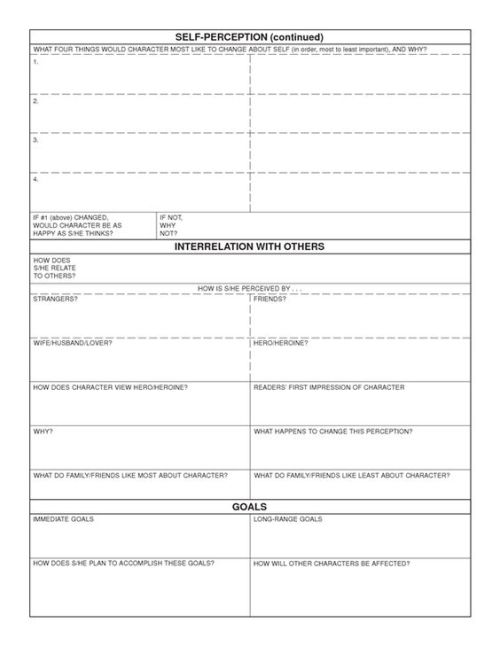
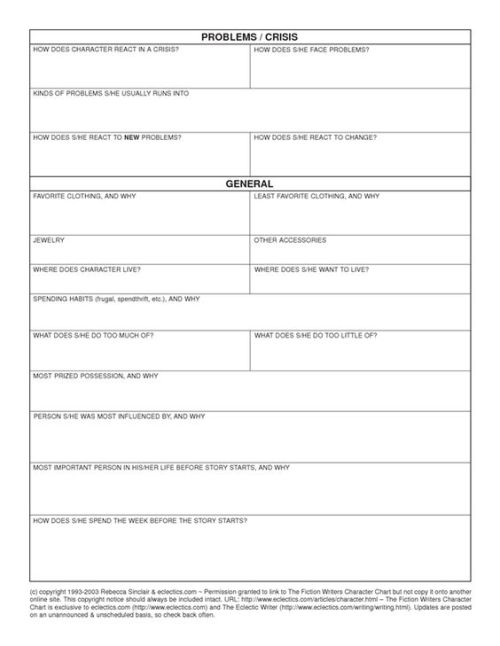
© (c ) copyright 1990-2011 Rebecca Sinclair
See the original HERE
i just found this website that can randomly generate a continent for you!! this is great for fantasy writers

plus, you can look at it in 3d!

theres a lot of viewing options and other things! theres an option on-site to take a screenshot, so you don’t have to have a program for that!
you can view it here!
Character Development : A Collection of Resources

Patreon || Ko-Fi || Masterlist || Work In Progress
–
Resources
Resources For Creating Characters
Resources For Describing Characters
Resources For Writing The Mafia
Resources For Writing Royalty
Commentary on Social Issues In Writing
General Tips
Guide to Character Development
How To Fit Character Development Into Your Story
Tips on Character Consistency
Designing A Character From Scratch
Making characters for your world
Characters First, Story Second Method
Understanding Your Character
Tips on Character Motivations
31 Days of Character Development : May 2018 Writing Challenge
How To Analyze A Character
Alternative Method of Character Creation
Connecting To Your Own Characters
Interview As Your Characters
Flipping Character Traits On Their Head
Character Driven vs. Plot Driven Stories
Traits
Tips On Writing About Mental Illness
Giving Your Protagonists Negative Traits
Giving Characters Distinct Voices in Dialogue
Giving Characters Flaws
Making Characters More Unique
Keeping Characters Realistic
Archetypes
Writing Good Villains
Creating Villains
Guide to Writing The Hero
Positive Character Development Without Romanticizing Toxic Behavior
Tips on Writing Cold & Distant Characters
Balancing Multiple Main Characters
Creating Diverse Otherworld Characters
Foreshadowing The Villain
–
Masterlist | WIP Blog
If you enjoy my blog and wish for it to continue being updated frequently and for me to continue putting my energy toward answering your questions, please consider Buying Me A Coffee, or pledging your support on Patreon, where I offer early access and exclusive benefits for only $5/month.
Shoutout to my $15+ patron, Douglas S.!
